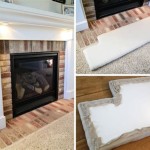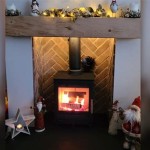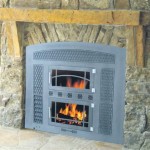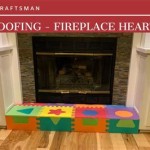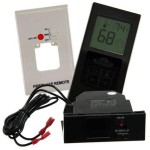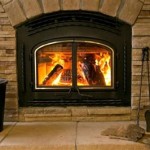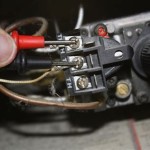Hiding TV Wires Above a Fireplace: A Comprehensive Guide
Mounting a television above a fireplace has become a popular design choice in many modern homes. It offers a central focal point for entertainment and can be particularly appealing in rooms with limited wall space. However, one of the biggest challenges with this setup is managing the unsightly wires that dangle from the television to the power outlet and other devices. Hiding these wires effectively is crucial for achieving a clean, polished aesthetic and maintaining the overall appeal of the room.
This article provides a comprehensive guide on how to hide TV wires above a fireplace, exploring various methods, tools, and considerations to ensure a safe and visually pleasing installation. It will cover techniques ranging from simple wire concealment options to more involved in-wall solutions, allowing homeowners and installers to choose the approach that best suits their needs and skill level.
Understanding the Challenges and Safety Considerations
Before diving into specific methods for hiding TV wires, it is essential to understand the unique challenges posed by installing a television above a fireplace. The primary concern is heat exposure. Fireplaces generate significant heat, which can damage electrical wires and pose a fire hazard if not properly managed. It is imperative to ensure that all wiring and components used are rated for high-temperature environments and comply with local building codes.
Another challenge is the structural integrity of the wall above the fireplace. Depending on the type of fireplace and the surrounding wall construction (brick, stone, drywall, etc.), running wires behind the wall can be difficult and may require specialized tools and techniques. It is crucial to avoid damaging the fireplace structure or compromising the fire safety features during the installation process.
Furthermore, accessibility is a key consideration. Hiding wires behind the wall can make it challenging to access them for maintenance, upgrades, or repairs. Planning for future accessibility is essential to avoid having to tear down the wall to make changes. This may involve using conduit pipes or access panels to provide easy access to the wiring behind the wall.
Finally, always disconnect the power before working with any electrical wiring. It is highly recommended to consult a qualified electrician if unsure about any aspect of the wiring process or if the installation involves modifying existing electrical circuits. Safety should always be the top priority.
Methods for Hiding TV Wires Above a Fireplace
Several methods can be employed to hide TV wires above a fireplace, each with its own advantages and disadvantages. The choice of method will depend on factors such as budget, skill level, wall construction, and aesthetic preferences.
1. Surface-Mounted Wire Concealers: This is the simplest and most affordable option. Surface-mounted wire concealers, also known as cable raceways or cord covers, are plastic or metal channels that adhere to the wall surface and enclose the wires. They come in various sizes, shapes, and colors to blend with the existing décor. Installation typically involves attaching the concealer to the wall with adhesive strips or screws, running the wires through the channel, and then snapping on the cover.
The advantage of surface-mounted wire concealers is their ease of installation and flexibility. They can be easily cut to size and painted to match the wall color. However, they are visible on the wall and may not be the most aesthetically pleasing option for homeowners seeking a completely clean look. They are also less effective at concealing a large number of wires.
2. In-Wall Wire Management Kits: These kits provide a more discreet solution by allowing the wires to be run behind the wall. They typically include two wall plates with openings, a hole saw for creating the openings, and a flexible conduit or wire ties for guiding the wires through the wall cavity. Installation involves cutting holes in the wall behind the television and near the power outlet, running the wires through the conduit, and then attaching the wall plates to conceal the openings.
In-wall wire management kits offer a cleaner appearance than surface-mounted concealers, as the wires are hidden from view. However, they require more effort to install and may not be suitable for all wall types. It is essential to ensure that the kit is designed for use with electrical wiring and that the conduit is fire-rated to prevent the spread of fire in the event of a short circuit. Also, always check for obstructions within the wall, such as pipes or studs, before cutting any holes.
3. Professional In-Wall Wiring: This is the most comprehensive and aesthetically pleasing solution, but it also involves the most effort and expense. It involves hiring a qualified electrician to run the electrical wiring behind the wall, including installing new outlets and cable connections as needed. The electrician will typically use conduit pipes to protect the wires and ensure compliance with local building codes.
Professional in-wall wiring offers a completely seamless look, as all the wires are hidden behind the wall. It also provides the safest and most reliable solution, as the wiring is installed by a licensed professional who is familiar with electrical safety standards. However, it is the most expensive option and may require a significant amount of time and disruption to the home.
4. Using Furniture and Decor: Strategically placed furniture and decorative elements can also help to conceal TV wires. For example, a console table or entertainment center placed below the fireplace can hide the power outlet and other devices, as well as provide a convenient place to run the wires behind. Decorative plants, picture frames, or other accessories can also be used to camouflage the wires and create a more visually appealing arrangement.
This method is a simple and cost-effective way to minimize the visibility of TV wires without requiring any modifications to the wall. However, it may not be suitable for all room layouts or decorating styles. It also requires careful planning to ensure that the furniture and decor effectively conceal the wires without obstructing the television or the fireplace.
Step-by-Step Guide to Hiding TV Wires Using an In-Wall Wire Management Kit
This section provides a detailed step-by-step guide to hiding TV wires using an in-wall wire management kit. It is important to note that this is a general guide, and the specific steps may vary depending on the kit and the wall construction. Always refer to the manufacturer's instructions for the specific kit being used.
Step 1: Gather the Necessary Tools and Materials: Before starting the installation, gather all the necessary tools and materials, including the in-wall wire management kit, a drill, a hole saw (typically included in the kit), a stud finder, a level, a pencil, a screwdriver, wire ties, and safety glasses.
Step 2: Locate Wall Studs and Obstructions: Use a stud finder to locate the wall studs behind the television and near the power outlet. Mark the location of the studs on the wall with a pencil. Also, check for any potential obstructions within the wall, such as pipes or electrical wiring. It is crucial to avoid drilling into studs or obstructing any existing utilities.
Step 3: Cut Holes in the Wall: Use the hole saw to cut two openings in the wall, one behind the television and one near the power outlet. The openings should be large enough to accommodate the wall plates and the conduit. Be careful not to drill too deep and damage any underlying surfaces.
Step 4: Install the Wall Plates: Attach the wall plates to the openings using screws or adhesive. Ensure that the plates are flush with the wall surface and that the openings are aligned correctly.
Step 5: Run the Wires Through the Conduit: Thread the television wires through the flexible conduit or wire ties. This will protect the wires and prevent them from coming into contact with the wall structure. Secure the wires inside the conduit using wire ties to keep them organized.
Step 6: Feed the Conduit Through the Wall: Carefully feed the conduit through the openings in the wall, connecting the wall plates. Ensure that the conduit is not kinked or twisted, as this can damage the wires. Use wire ties to secure the conduit to the wall studs, if necessary.
Step 7: Connect the Wires: Connect the television wires to the appropriate devices, such as the power outlet, cable box, or game console. Ensure that all connections are secure and that the wires are not frayed or damaged.
Step 8: Test the Installation: Plug in the television and other devices to test the installation. Ensure that everything is working properly and that there are no electrical issues. If any problems are detected, disconnect the power and recheck the wiring.
Step 9: Conceal the Openings: If necessary, use drywall compound to fill any gaps around the wall plates and create a smooth, seamless finish. Paint the wall to match the existing color.
Key Considerations for Fireplace Wire Management
The fireplace environment presents unique challenges for wire management, requiring careful attention to safety and heat resistance.
1. Heat Resistance: Standard electrical wires are typically not designed to withstand the high temperatures generated by a fireplace. It is crucial to use high-temperature-rated wires and components that can safely operate in these conditions. These wires are typically insulated with materials such as Teflon or silicone, which are more resistant to heat degradation.
2. Conduit Protection: Enclosing the wires in a metal or fire-resistant conduit pipe provides an additional layer of protection against heat and physical damage. The conduit should be properly grounded to prevent electrical hazards.
3. Clearance from Fireplace: Maintain a safe distance between the wires and the fireplace to minimize heat exposure. Avoid running wires directly above the fireplace opening or near the chimney. Consider using heat shields or insulation to protect the wires from radiant heat.
4. Building Codes: Ensure that the wire management installation complies with local building codes and electrical regulations. Consult with a qualified electrician to ensure that the installation meets all safety requirements.
By carefully considering these factors, it is possible to safely and effectively hide TV wires above a fireplace, creating a visually appealing and functional entertainment space. Remember to prioritize safety and consult with professionals when necessary to ensure a successful installation.

Tv Wall Mount Installation With Wire Concealment Over Fireplace

How To Hide Tv Wires Above A Fireplace When You Can T Go Through The Wall Homes I Have Made

How To Hide Tv Wires Above A Fireplace When You Can T Go Through The Wall Homes I Have Made

Hide Cords Of A Tv Mounted Over Fireplace Powerbridge

How To Hide Cable Wires When Mounting Tv Over Fireplace Hometalk

How To Mount A Tv Over Brick Fireplace And Hide The Wires Designing Vibes Interior Design Diy Lifestyle

Tv Wall Mount Installation With Wire Concealment Over Fireplace

Hiding Wires For A Tv Above Fireplace Extension Kit Powerbridge Mount Over Mounted

How To Hide Tv Wires Above A Fireplace When You Can T Go Through The Wall Homes I Have Made

How Should I Run Wiring For My Above Fireplace Mounted Tv Mount


